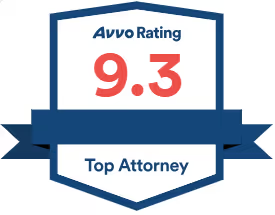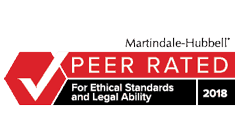Table of Contents
- What Is an Environmental Illness?
- How Do You Know if You’re Experiencing an Environmental Illness?
- Exploring the Factors Contributing to Environmental Illnesses
- Understanding Environmental Law
- Who Can You Sue in an Environmental Justice Case?
- Establishing Liability for Environmental Illnesses Cases in NYC
- The Process of Filing an Environmental Illness Lawsuit
- Compensation for Environmental Illnesses
- How Long Can You Sue for Environmental Illness in New York?
If you contract an environmental sickness due to someone's negligent or unlawful actions, you can potentially sue them for damages. For instance, if a company fails to properly protect the environment from hazardous waste and someone falls sick, the victim's NYC personal injury lawyer would have to show how the company's failure to contain their waste directly led to their client falling ill.
Read on to understand environmental illnesses and who might be liable for them.
What Is an Environmental Illness?
An environmental illness is a sickness resulting from contact with hazardous chemicals or toxins in the environment, such as:
- Asbestos
- Contaminated water
- Workplace chemicals
- Lead
- Cigarette smoke
Such hazards can be found at work, home, school, and other places. They all have extremely negative impacts on public health.
How Do You Know if You’re Experiencing an Environmental Illness?
Identifying an environmental illness can be difficult. This is because symptoms of an environmental illness often match those of other common illnesses.
However, if you have experienced any of the following signs or symptoms and have recently been exposed to hazardous materials, you may have an environmental illness:
- Rashes and skin discoloration
- Nausea and/or vomiting
- Headaches or migraines
- Coughing, dry and productive
- Fever
- Chills
- Muscle aches
Do not hesitate to seek medical attention if you exhibit any of the above-listed symptoms. Swift medical treatment can prevent you from getting sicker and help establish the cause of your sickness and its source.

Exploring the Factors Contributing to Environmental Illnesses
Environmental illnesses can have many different causes. Knowing these potential causes is important because if they're not dealt with quickly, more people can be exposed, and injuries can become more serious.
Some of the more common factors that contribute to environmental illnesses include:
- Air Pollution: Companies must abide by the Clean Air Act and never exceed their exhaust limits for dangerous chemicals and substances, such as carbon monoxide and nitrogen oxide.
- Pesticides: Overuse and improper use of pesticides can lead to serious environmental illnesses.
- Polluted Waterways: Streams, rivers, wells, and other water supplies are all at risk when companies negligently dump waste or otherwise carelessly cause water pollution to occur or become exacerbated.
- Chemical Handling: Some businesses and organizations create chemicals for industrial purposes, and some create hazardous waste. These companies must follow environmental statutes (such as the Clean Air Act) to not endanger public health. Sadly, some organizations take shortcuts or are irresponsible with chemical materials, leading to dangerous chemicals coming into contact with the public.
Environmental contamination and serious harm often occur when a company tries to circumvent its responsibilities in order to save time and money. Instead of following the principles of environmental justice, EPA regulations, and environmental statutes, some companies ignore them and put their workers and public health at risk, as was the case with a few of our clients who we are representing in a Trichloroethylene and Tetrachloroethylene exposure lawsuit. These cases can occur when workers such as mechanics and technicians come into contact with dangerous chemicals.
Understanding Environmental Law
Environmental justice and environmental protection laws have become important to protect people and communities from dangerous environmental conditions that threaten natural resources and lead to dangerous living conditions.
Thankfully, individuals and communities (most often minority and poor individuals and communities) who find their drinking water contaminated or their air significantly polluted with many chemicals have more and more legal options as environmental justice and protections continue to evolve.
According to these developing environmental justice laws, polluters and contaminators can be held liable in a personal injury lawsuit if their actions damage the environment and cause people to contract serious health problems or experience property damage.
Who Can You Sue in an Environmental Justice Case?
If you have been exposed to an environmental hazard, you can potentially file an environmental justice lawsuit against the individual or entity responsible for causing the hazard.
However, you must be able to identify the source of the contamination and show that your illness came about because of it. Once you identify the source, you can bring a claim for compensation or a lawsuit against whoever is responsible, which may be:
- Companies engaging in the manufacturing of chemicals
- Companies that dump toxic waste
- Property owners who improperly or illegally store toxic waste
- Companies that transport toxic waste or dangerous chemicals
- Parties or individuals who improperly store or use toxic waste on private property
Essentially, any person or entity that negligently or unlawfully causes exposure to dangerous chemicals and toxic chemicals can be held to face liability in an environmental justice claim for compensation.

Establishing Liability for Environmental Illnesses Cases in NYC
Establishing liability for environmental illnesses can be complex. Therefore, victims should hire an experienced New York City environmental justice lawyer to handle their affairs for optimal odds of success:
- Identifying the Source: Your lawyer will first identify the source of the contamination, pollution, or hazard that caused your environmental illness. Depending on the circumstances, the source could be water, air, or food, to name just a few.
- Identifying the Contaminating Party: Once the source is discovered, your lawyer will then determine who is responsible. For example, if your home's water is being contaminated, the party responsible for the contamination may be a nearby company that dumped waste into the water supply or a transport company that spilled hazardous chemicals near your home.
- Determining Liability: Your environmental justice lawyer must then discover whether the contaminating party is in violation of its duty of care toward you or in violation of any regulation or rule designed to protect people.
- Determining Your Losses: Your environmental justice attorney must demonstrate that you have suffered compensable losses caused by the contamination or hazard in order to prevail in your lawsuit.
Without a seasoned lawyer to advise you during these steps, it becomes infinitely harder to secure maximum compensation.
The Process of Filing an Environmental Illness Lawsuit
The process of filing an environmental illnesses lawsuit begins with seeking the services of an environmental law attorney as soon as possible. Waiting to take action can lead to the court dismissing your environmental justice case for violating the statute of limitations.
Once you have chosen a lawyer to represent you, you will need to provide them with as much relevant information about your case as possible, such as:
- Any official complaint or report you have filed, such as police, DMV, or other government agency reports
- Medical records
- Photos and video footage
- Witness statements
- A journal or diary of relevant pre- and post-injury details
Once your environmental justice lawyer has all of the relevant information, they will likely file a claim with the insurance company of the contaminator and begin negotiating a settlement.
During this time, your lawyer may receive offers on your behalf but will only entertain them if they are sufficient. If negotiations fail, mediation or trial could be on the table, in which case depositions and more thorough investigations would begin.
Compensation for Environmental Illnesses
There are two types of compensation (damages) that you may be entitled to in an environmental illnesses case: economic and non-economic. For example, cancer development due to toxic exposure would produce monetary and non-monetary losses.
Economic damages cover your monetary losses, such as:
- Medical bills for your health
- Income loss
- Lost future earning capacity
- Homecare costs for domestic tasks
Non-economic damages, on the other hand, cover non-monetary setbacks and losses, such as:
- Permanent disability
- Disfigurement and scarring
- Pain and suffering
- Loss of enjoyment of life
- Loss of consortium
If the responsible party engaged in egregious behavior, you may also be entitled to punitive damages, which exist to punish the liable party and deter others from ignoring their duty to protect the environment.

How Long Can You Sue for Environmental Illness in New York?
If you have suffered an illness due to exposure to hazardous materials or toxins, you have three years to take action for compensation. Environmental justice lawsuits that are filed after the three-year window will likely be dismissed, although there are some exceptions.
If you believe you have a valid environmental justice case, don't hesitate to call our office, even if three years have passed. A New York City environmental illnesses lawyer from our team can review your case to determine whether it remains valid despite the passage of time.
Reach Out to Our Team to Get the Compensation You Deserve for Your Environmental Illness
You deserve justice if the negligence of others has caused you and your loved one harm. Don't let guilty parties get away with causing your illness.
At the Jacob Fuchsberg Law Firm, we have handled many environmental illness cases and are ready to discuss your case with you. Contact us at (212) 869-3500 to schedule a free consultation with one of our environmental illnesses lawyers and learn how we can help.
FAQ

.svg)











